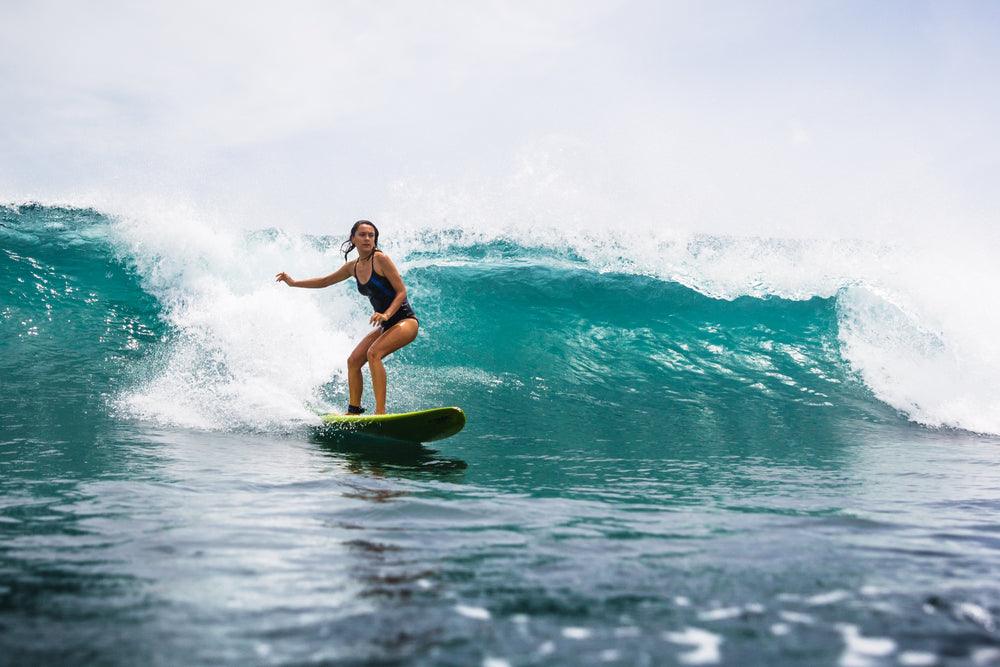
If you already know how to paddle out to sea, how to catch a wave and how to stay on top of your surfboard, the only thing left to learn is how to stay ahead of the wave. Although it may seem easy when you look at other surfers doing it or watch videos on YouTube, it’s actually much more challenging and tricky than that.
Your main objective as a beginner should be to learn how to surf along the front face of the closest wave to the shore, getting the longest possible ride while maintaining a reasonable speed. This is what you should aim for! So, onto the big question – what do surfers do to stay ahead of the wave?
Planning And Preparation
Professional surfers don’t just run straight to the beach, jump into the water and start paddling without knowing what they are going to do once they are actually out there in the ocean. Any professional surfer can tell you that surfing requires some form of planning and preparation in order to achieve success, especially if you are new at this sport.

With that said, it is very important that you think before you start paddling out to sea! Take some time to establish which direction you will be swimming to so as to catch an oncoming wave. Knowing and predicting the behaviour of waves takes time and practice. How you approach your drop-in will be influenced by the type of wave you are riding.
Let’s take a look now at what type of waves there are and the best approach to use for each one:
- Rolling Waves
These are the most common waves on beaches, and the most popular waves among surfers. These waves break evenly in a predictable pattern. Rolling waves mostly occur on flat and sandy beaches. Rolling waves can be both small and large (going up to 5-6 metres high) depending on your surfing location.
- Dumping Waves
Dumping waves are less predictable than rolling waves. These waves are caused by a sudden change in the topography of the shoreline. An underwater mountain or cliff can create dumping waves. These waves are reserved for pro surfers because they can be very dangerous. Dumping waves can throw surfers deep into the water with great force.
Dumping waves can also be caused by point breaks and reef breaks which are basically changes in movement of water caused by rocks, corals and reefs.
- Surging Waves
These are the most dangerous waves and commonly occur on rocky shorelines and beaches. These are not to be messed with!

Catching Waves
If you are surfing a typical rolling wave, you should start angling to the left or right as soon as you start paddling. It’s advisable to angle mid-face in order to use the wave’s energy to propel yourself forward and stay ahead of the wave.
On the other hand, if you are surfing a more vertical or bigger wave, you should face forward and catch the wave before angling in order to avoid digging a front (nose) or side (rail) and thus falling during the drop.
Staying Ahead Of The Wave
Staying ahead of the wave is relatively easy. While maintaining a low centre of gravity (bend your legs at the knees) lean your body weight towards the face of the wave while keeping your body centred over the midpoint of your surfboard. This will propel the side of your board into the water, cutting the water, and directing your surfboard to your desired direction.
Always remember to keep your eyes focused on the direction you are going. Don’t look anywhere else as this may disorient you and cause you to plunge into the water without notice. Finally, leaning slightly with your front foot will give you better manoeuvrability and control as you surf.
Final Thoughts
At Beachin Surf, you can find a large range of online surfboards and surf accessories for beginners right through to the pros. Alternatively, please feel free to come and visit our shop at 262 Maine Road, Toukley, NSW. We are happy to show you around and assist you in finding whatever you need for a better surfing experience.
Please call us today on (02) 4396 5159 or send us an inquiry.
